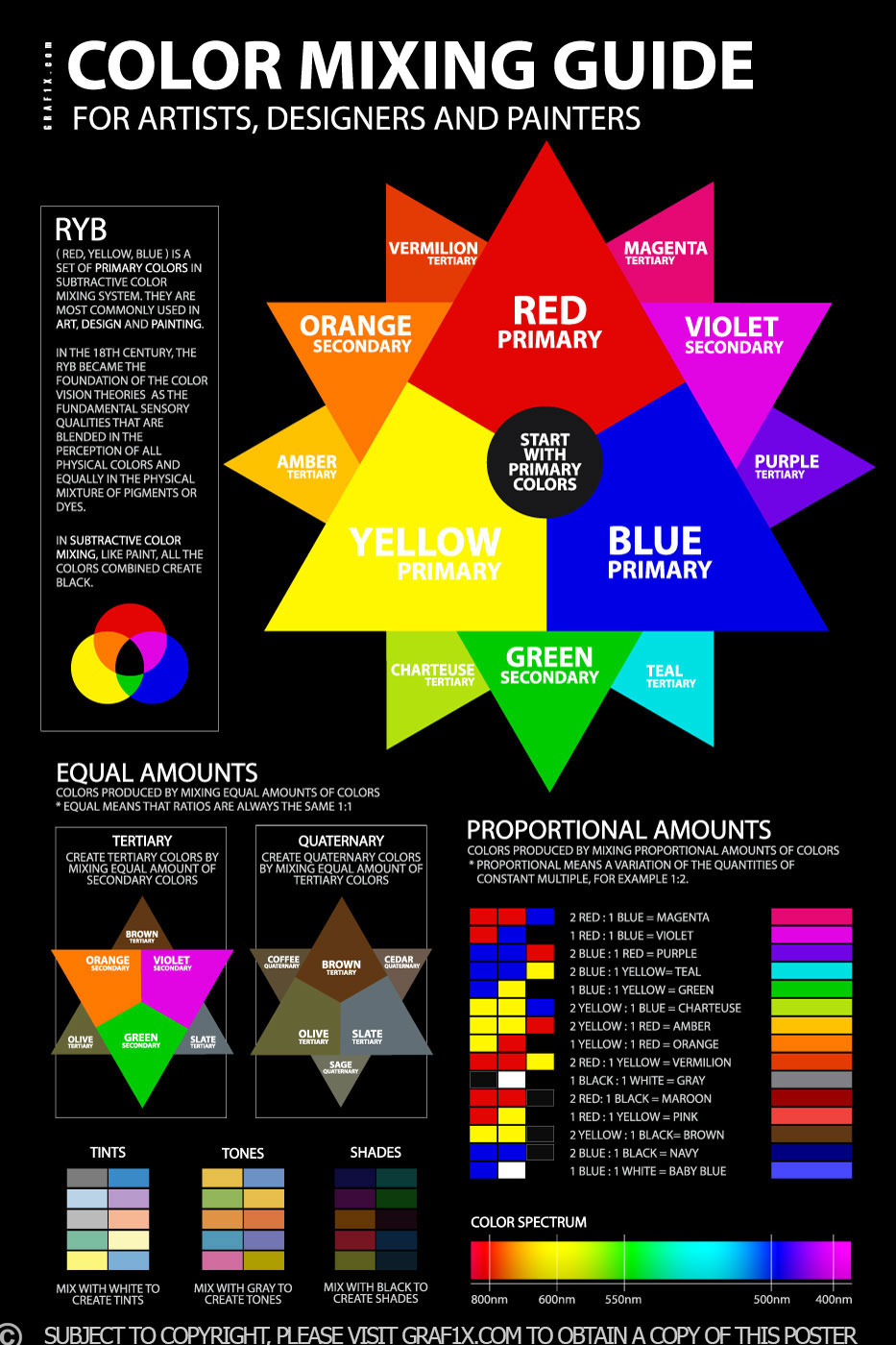A color mixing chart is a very useful tool for artists, painters, and designers. By adding the colors red, yellow, and blue to a white surface in proportional amounts, an artist is able to create a nearly unlimited number of different colors. The attached poster illustrates a color mixer chart that will provide a useful guide to how specific colors can be mixed using a Red/Yellow/Blue subtractive system of color mixing.
Mixing Proportional Amounts
To create a wide range of new colors, primary colors can be mixed using a variety of different quantities of color in proportion to each other. Mixing paints, pigments, or dyes by using proportional color mixing formulas ensures that a specific color can be duplicated, which allows an artist to provide consistency and predictability in color mixing.
Proportional color mixing can involve simple ratios, like using twice as much red as yellow, or complex formulas, such as mixing one part red, two parts blue, and three parts yellow. Each combination will produce a new and interesting result.
The attached color mixing poster outlines some additional formulas for mixing colors proportionately. The most commonly used proportional color formulas involve mixing two parts of a primary color to one part of a different primary color to create a tertiary color as outlined below;
2 Red + 1 Blue = Magenta
2 Blue + 1 Red = Purple
2 Blue + 1 Yellow = Teal
2 Yellow + 1 Blue = Chartreuse
2 Yellow + 1 Red = Amber
2 Red + 1 Yellow = Vermilion
Additional depth can be added to color by adding white, black, or gray in proportional amounts. Mixing color with white produces a tint. Mixing color with black produces a shade. Mixing a color with gray, created from equal amounts of black and white, creates a tone.
Mixing Equal Amounts
The most basic of color mixing formulas involves mixing equal amounts of two or more colors together.
When all three primary colors are added equally the end result is black:
1 Red + 1 Yellow + 1 Blue = Black
If only two of the three primary colors are mixed in equal amounts, the result is a secondary color:
1 Red + 1 Yellow = Orange
1 Blue + 1 Yellow = Green
1 Red + 1 Blue = Violet
Mixing two secondary colors in equal amounts creates a tertiary color:
1 Orange + 1 Green = Olive
1 Violet + 1 Green = Slate
1 Orange + 1 Violet = Brown
Mixing two tertiary colors in equal amounts creates a quaternary color:
1 Brown + 1 Slate = Cedar
1 Slate + 1 Olive = Sage
1 Brown + 1 Olive = Coffee
